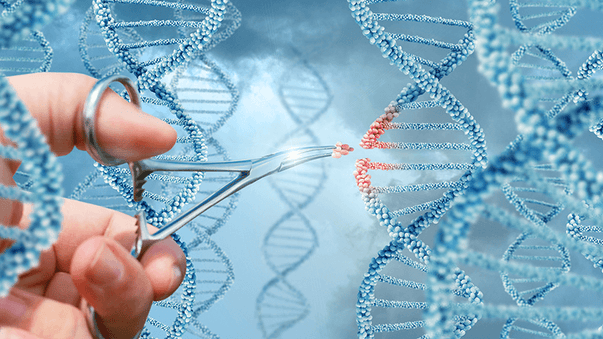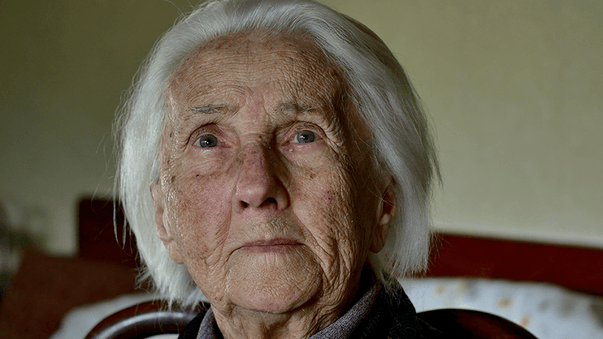VR Is Useful and Fun, But Spend Time Outdoors Too

Scientists at the University of Bristol, with cloud computing and virtual reality (VR) experts, have designed a VR collaborative playground that permits “touching” molecules to snap them into place (see below), which could have a significant impact on drug design.
"Thanks to this research, we can now apply virtual reality to study a variety of molecular problems which are inherently dynamic, including binding drugs to its target, protein folding, and chemical reactions,” said University of Bristol Professor of Chemistry, Adrian Mulholland. "As simulations become faster we can now do this in real time, which will change how drugs are designed and how chemical structures are taught."
At the same time, a study from the University of East Anglia has confirmed that living close to nature and spending time outside has significant and wide-ranging health benefits. Exposure to green space reduces the risk of type II diabetes, cardiovascular disease, premature death, preterm birth, stress, and high blood pressure.
New analysis method reveals potential therapeutic targets for brain diseases. Researchers at the Translational Genomics Research Institute (TGen) and a Silicon Valley startup called Circuit Therapeutics have developed new methods for examining medium spiny neurons (MSN), associated with many psychiatric and neurodegenerative diseases, including Parkinson's disease, Huntington's disease, schizophrenia, drug addiction and ADHD. A study published in Frontiers in Cellular Neuroscience describes how the scientists used the new method to identify a specific gene, known as Chrm4, as one of several potential therapeutic drug targets.
New gene therapy delivery method for kidney diseases. A research project led by scientists at Washington University in St. Louis has unveiled a potential key step toward developing gene therapy to treat chronic kidney disease, a condition that affects 30 million Americans, most of whom don't realize they have it. A research paper published in Journal of the American Society of Nephrology shows that, in laboratory mice, genetic material can be delivered to damaged cells in the kidneys using a synthetic virus.
Promising research toward treatment of auto-inflammatory diseases. Scientists at Ecole Polytechnique Fédérale de Lausanne (EPFL) have discovered two small-molecule compound series that can effectively block a central pathway of the innate immune system, offering a promising new way for treating auto-inflammatory diseases. Based on the research results, described in a study published in Nature, the scientists carried out proof-of-concept pre-clinical studies to test the effect of the compounds on actual auto-inflammatory diseases.
Synthesis strategy could enable the development of new medicinal compounds. Scientists at Florida State University have devised a new strategy for synthesizing carbocyclic 5-8-5 fused ring systems, a molecular structure with broad therapeutic potential, which is very difficult to produce using conventional laboratory methods. A study published in Chemical Science describes a method for producing large quantities of the 5-8-5 ring structure with a highly controlled operation that employs ultraviolet light to promote ring formation. According to the scientists, this research could open the door to a new world of cutting-edge medicinal compounds.
DNA repair study could help identify new cancer therapies. Researchers at Mayo Clinic have determined how one DNA repair protein gets to the site of DNA damage. In a research paper published in Nature Structural & Molecular Biology, the scientists describe a proof-of-principle mechanism for how RNA molecules can trigger the localization of a protein called 53BP1, which detects and repairs DNA damage, to damage sites. The researchers hope this research will help identify new therapies, for example for ovarian cancer.
Real-time collaborative VR tools could facilitate the development of new drugs. Scientists at the University of Bristol, in collaboration with Oracle and Bristol based start-up Interactive Scientific, have developed new virtual reality (VR) cloud-based tools to help academics and industry develop new materials and drugs. The researchers have used Oracle's public cloud infrastructure to combine real-time molecular simulations with the latest VR technology. A study published in Science Advances describes how, using cloud computing, several people can interact with the molecules in the same virtual space at the same time and “touch” molecules as they move - folding them, knotting them, plucking them, and changing their shape to test how they interact.
More Articles
Don't miss a beat! In our Pulse Newsletter, Thrivous curates the most important news on health science and human enhancement, so you can stay informed without wasting time on hype and trivia. It's part of the free Thrivous newsletter. Subscribe now to receive email about human enhancement, nootropics, and geroprotectors, as well as company news and deals.
Read more articles at Thrivous, the human enhancement company. You can browse recent articles in Thrivous Views. See other Pulse Newsletter articles. Or check out an article below.
-
Gene Editing for Cell Therapy and Designer Babies
Scientists have found a way to efficiently and precisely remove genes from white blood cells of the immune system and ...
-
No Fixed Limit to the Human Lifespan
New research results released last week don’t support the idea that humans have a fixed expiration date — no hardwired ...


